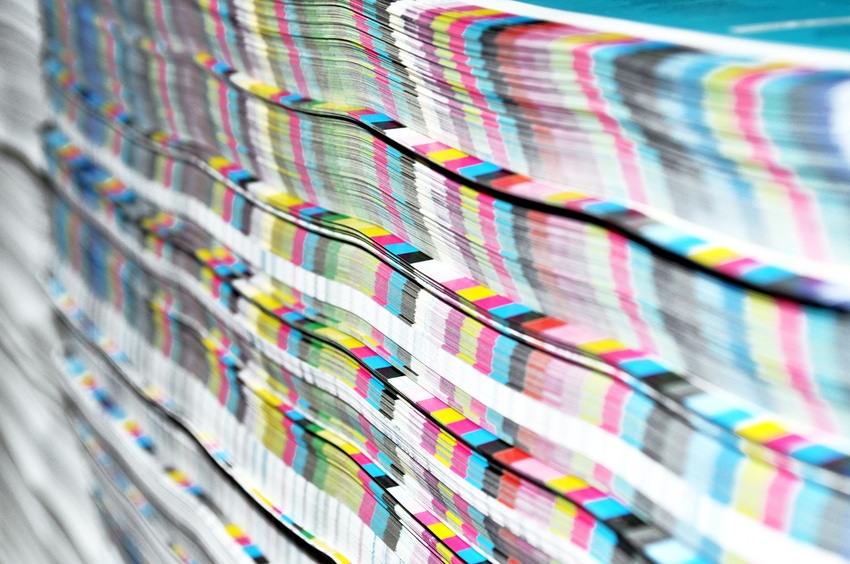How digital package printing safeguards a brand’s quality
March 27, 2018

The benefit that digital printing adds to brands, according to industry expert Jaron Lotan? Higher value. High-quality packaging allows for more design variations and thus more targeted marketing, capturing the consumer’s attention with relevance in a world where a product can be removed from the cart, returned or replaced by another product with a mere click of the mouse.
Consumer purchases are facilitated today by digital technologies, such as their smartphones, according to Deloitte’s 2017 Consumer Products Outlook. Therefore, consumer packaged goods (CPG) companies have the opportunity to engage and influence consumers at every stage of the buying process, from initial research to the final purchasing decision.
Brands already rely heavily on packaging to position and sell their product, but will progressively do so as traditional push-advertising becomes more fragmented and digital dominates the way consumers research products, creating a pull for information. With consumers showrooming or webrooming their experiences with actual products (not retouched glamour shots), color and defect control in product packaging becomes more significant and ensures that brand identity remains intact and entices the consumer during the Zero Moment of Truth.
Consequently, brand owners are placing a greater focus on the quality of their product packaging. While packaging manufacturers already drive the quality of ink on substrate, they will look to meet the greater demand from major CPG players to prove that the level of quality delivered is what the brand owner has specified.
Streamlining operations efficiently and providing precision quality are two main reasons for the steady rise of digital printing. For example, manufacturers can now receive an order and have it processed, printed and ready for shipment the same day. Everyone in the packaging value chain knows that time is money and any process that successfully eliminates constraints for both resources in valuable.
The added benefit that digital printing adds to brands? Higher value. High-quality packaging allows for more design variations and thus more targeted marketing, capturing the consumer’s attention with relevance in a world where a product can be removed from the cart, returned or replaced by another product with a mere click of the mouse.
Previously, digital printers were a “nice to have” but not a “need to have” for converters and packaging manufacturers, but digital printing has demonstrated print quality improvements, provided flexibility on the line, quicker turnaround times and shorter print runs—all of which reduce cost and improve the process.
Digitization also impacts the quality of the press run, as converters and manufacturers can view what’s happening on the press in real time, allowing for quick adjustments and improvements, while removing waste and improving quality efficiently in the overall workflow.
In a recent Karstedt Partner’s article, according to Smithers Pira, in 2015 the global digital packaging and label printing market was valued at $10.5 billion. The digital print for packaging market will grow by an average compound annual growth rate (CAGR) of 13.6% in constant value (real) terms to 2020, with a print volume CAGR of 16.2%. Despite this projected growth, digitally printed output makes up a small percentage of overall packaging. Just 5% of labels are now printed digitally and less than 1% of all other packaging in printed digitally. The opportunity is there.
And as the growth of digital printing technology persists, the “nice to have” will soon become a requirement for many converters looking to streamline processes; using digital printers to serve their clients will no longer be optional—it will be mandatory to keep up with demand.
But how will this trend carry into 2018?
With the additional advantages of using digital technology, digital printer sales will continue to rise. Not only will we see major players add digital to conventional printing, but smaller players as well.
And as more businesses take advantage of digital, there will be a greater need for automation tools that help capture quality data that reports to both brand owners and converters. Brands will continue to benefit from new solutions that help reduce waste and improve the quality of their production workflow.
Essentially, there will be more opportunities for digitization of their packaging value chain in 2018, as brands seek to satisfy their needs for consistent quality and control, and converters satisfy that need with automation.

Jaron Lotan, president/CEO at Advanced Vision Technology (AVT), has 30 years of senior management experience with technology companies focused on international markets. Lotan holds a Bachelor’s degree in Economics and Mathematics and a Master’s degree in Economics, both from the Hebrew University of Jerusalem.
About the Author(s)
You May Also Like


